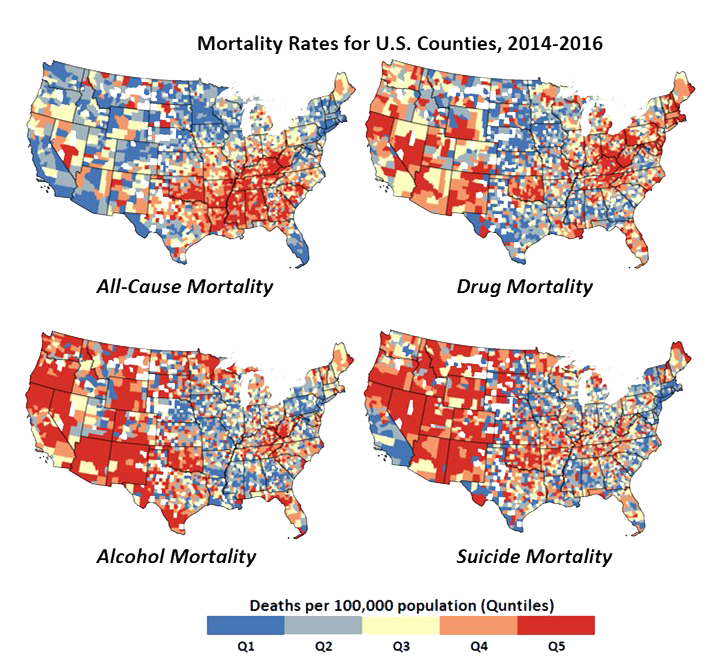Our research on US local areas investigates how health care access, use, behaviors, and outcomes varies across counties and neighborhoods and how county political, economic, and social environments and institutions shape population health outcomes, including opioid and other substance use, mental health, and mortality from the so called “diseases of despair”. Much of our research explores the causes of variation in health along the US rural-urban continuum as well as variation across different types of rural settings. Research in this area also takes into account that counties are embedded within state political-economic environments that can constrain or enhance local efforts to address population health problems. We use a variety of quantitative and qualitative methods to address pressing questions, such as:
-
- Why are mortality rates higher among some demographic groups and in some geographic areas than others?
- How do county and state economic and policy environments interact to produce the mortality trends we observe?
- Why have mortality rates increased so rapidly in many small cities and rural areas since the early 2000’s?
- Why do some types o rural communities exhibit much better health profiles than others?
- How do individuals’ social networks interact with their local environments to contribute to substance misuse and other risky behaviors?
- How do local health conditions affect national political outcomes?

